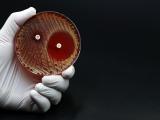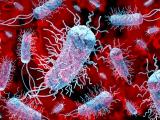Feb 27, 2012
Flu activity still on the rise in Europe
Influenza activity continued to increase in much of Europe and showed signs of peaking in two countries the week of Feb 13 to 19, the European Centre for Disease Prevention and Control (ECDC) reported on Feb 24. Of 28 countries that provided clinical data, 19 reported increasing activity. Austria and Greece cited high-intensity activity, while 16 countries reported medium levels of activity and 10 reported low activity. "Bulgaria and Italy have reported decreasing trends for two consecutive weeks, suggesting that their influenza seasons have peaked," the report said. Almost half (49.5%) of 1,873 respiratory specimens from sentinel providers tested positive for flu, about the same percentage as in the previous 2 weeks. A/H3N2 viruses were overwhelmingly dominant. Of 2,901 flu viruses detected from sentinel and non-sentinel sources, 96.1% were type A and 3.9% were type B. More than 98% of the 1,085 influenza A viruses that were subtyped
were H3N2, and 1.8% were pandemic 2009 H1N1. "The influenza A(H3) and B viruses circulating this season have moved genetically and antigenically away from 2011–2012 seasonal vaccine viruses," the ECDC said. "This prompted WHO [World Health Organization] to recommend different vaccine viruses for the 2012-2013 seasonal vaccine." Last week the WHO recommended changing the H3N2 and B strains in next season's vaccine for the Northern Hemisphere.
Feb 24 ECDC flu update
Feb 23 CIDRAP News story on flu strains for 2012-13 vaccine
Chinese region launches fresh round of polio vaccination
Health officials in China's remote Xinjiang Uygur autonomous region will conduct two more rounds of emergency polio vaccinations, the fourth and fifth such campaigns since the disease was detected in the area in August 2011, Xinhua, China's state news agency, reported today. March and April immunization campaigns will target people under 40 in five of the area's regions, with children younger than 14 to receive two rounds of vaccination. Twenty polio cases have been reported since August. China had been polio-free since 1999; the latest outbreak was caused by a strain that originated in Pakistan.
Feb 27 Xinhua story
In other developments, India passed the year mark on Feb 25 since it last reported a polio case, the Associated Press (AP) reported today. The milestone is considered a major victory in the country's fight against the disease, and
the achievement allowed India to be removed from the WHO's list of countries in which the disease is endemic. If India goes 2 more years without registering a polio case, it will be declared polio-free.
Feb 27 AP story
MRSA survival and screening in health settings
Two recent studies in the American Journal of Infection Control explored methicillin-resistant Staphylococcus aureus (MRSA) risks in healthcare settings. The first study tracked MRSA survival on surfaces in a doctor's office using a dose consistent with a high carrier in a natural setting. Researchers applied five different MRSA strains to strips of upholstery that were placed on a dental chair, where they were exposed to normal office light, temperature, and air flow. They tested MRSA levels immediately after inoculation and at various times between 15 minutes and 112 days. MRSA levels fell drastically within 15 minutes of environmental exposure, then decreased progressively. At 4 months, they found very low levels of MRSA in 9 of 25 tests. They concluded that natural contamination results in low residual levels below the minimum infective dose, though long-term persistence suggests that the risk of acquiring MRSA from such
surfaces is high.
Feb 24 Am J Infect Control abstract
In the second study, researchers screened hospital roommates who were exposed to MRSA index patients over a 57-month period at a Toronto hospital. Screening was conducted at three different intervals: 0 to 1, 2 to 4, and 5 to 10 days after breaking contact. The overall conversion rate was 8% among exposed roommates. Investigators found that MRSA detection was better at about 3 or 7 days after contact was broken. Results were similar with polymerase chain testing and culture at day 7. Also, they found that nasal screening combined with rectal screening was better for detecting MRSA than nasal screening alone.
Feb 24 Am J Infect Control abstract
PAHO, CDC unveil chikungunya guide
Though the chikungunya virus hasn't spread locally in the Western Hemisphere, experts say there is a growing risk it could be introduced to local mosquito populations, according to a guide today from the Pan American Health Organization (PAHO) and the US Centers for Disease Control and Prevention (CDC). The goal of the 161-page guide is to help countries better detect, monitor, prevent, and control the disease if it appears, PAHO said in a press release. From 2006 to 2010, 106 lab-confirmed cases in travelers returning to the United States were reported to the CDC, compared with just three cases from 1995 to 2005. The CDC said the disease, which is rarely fatal but can cause fever and severe joint pain, has infected more than 2 million people in Africa and Asia since 2004, with attack rates as high as 68% in some areas. Local transmission has been reported in areas where the virus was not previously found, such as northern Italy and southern France.
Nine illnesses in French territories in the Americas have been reported, but none led to local transmission. The authors of the guide say the broad distribution of mosquitoes that can spread the virus and the fact that people in the Americas have not been exposed to the disease puts the region at risk. Two types of mosquito that can spread the virus are found in the United States, Aedes aegypti in the southern United States and Aedes albopictus (Asian tiger mosquito), which is widespread in southeastern states and on the East Coast.
Feb 27 PAHO press release
PAHO/CDC guide



















